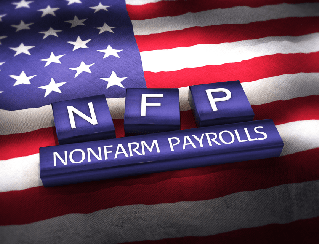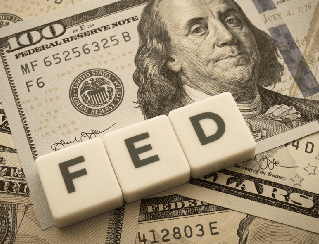US stocks advanced higher on Tuesday, extending their previous rally and rose for the third day as investors awaited midterm election results and monitored the selloff in crypto markets.
Bitcoin plummeted to a fresh 2022 low at $18,355 amid the collapse of FTX and Binance’s decision to save the crypto exchange. The mini-crash in Bitcoin has weighed on the stock market and caused a sharp drop as investors don’t like to see any disruptions in any risk asset.
On top of that, the results of the US mid-term elections would take a couple of days, which could have long-lasting effects on the American dollar. A history of robust performance following midterm results has provided support to the outlook for equity markets.
In the Eurozone, the euro cheers the upbeat Eurozone data despite some discouraging news, as the European Commission said there is no way to create a gas price cap as requested by EU leaders at the end of October. Eurozone’s Retail Sales rose by 0.4% MoM in September.

The benchmarks, S&P 500 and Dow Jones Industrial Average both climbed higher on Tuesday as the S&P 500 closed higher with investors eyeing potential gridlock from midterm election results ahead of the release of US inflation figures. The S&P 500 was up 0.6% daily and the Dow Jones Industrial Average also advanced higher with a 1.0% gain for the day.
Ten out of eleven sectors in the S&P 500 stayed in positive territory as the Materials and Information Technology sectors are the best performing among all groups, rising 1.68% and 0.92%, respectively. The Nasdaq 100 meanwhile climbed higher with a 0.8% gain on Tuesday and the MSCI World index was up 0.8% for the day.

Main Pairs Movement
The US dollar declined lower on Tuesday, remaining under bearish pressure and plummeted to fresh monthly lows against most of its major rivals during the US trading session as the markets await the outcome of the US mid-term elections. The positive tone of US equities and easing government bond yields both exerted bearish pressure on the greenback amid the optimism surrounding US Mid-Term Elections. The important election results would take a couple of days.
GBP/USD edged higher on Tuesday with a 0.26% gain after the cable retreated from a daily high and dropped to the 1.1520 area amid risk-on market sentiment. On the UK front, Bank of England Chief Economist Huw Pill said the central bank has more to do with tightening the monetary policy. Meanwhile, EUR/USD holds on to its gains ahead of the US close and climbed above the 1.0070 mark amid the market’s optimism surrounding the US election outcome. The pair was up almost 0.54% for the day.
Gold surged with a 2.20% gain for the day after reaching levels that were last seen in September around the $1,714 mark during the late US trading session, as the weaker US dollar across the board helped the precious metal to find demand. Meanwhile, WTI Oil was sharply down with a 3.14% loss for the day amid concerns over China’s oil demand. Crude oil prices have retreated to the $88.50 area.
Technical Analysis
EURUSD (4-Hour Chart)

The EURUSD managed to climb back to the level above the 1.0000 threshold as the US dollar fell below the 110 level, which is the first time in the last two weeks, during the US trading session. The outcome of the US mid-term elections could have long-lasting effects on the American dollar, particularly if Democrats are not able to retain control of both houses. Republicans do not need much to seize control of Congress. If that’s the case, they may oppose President Joe Biden’s massive expenses, which would exacerbate the risk of an economic downturn. Equities will likely collapse, but it does not seem the dollar could benefit much from it.
In Eurozone, France’s trade deficit widened to € 17.49B in September and Retail Sales in Italy expanded 0.5% MoM in the same month. Meanwhile, price action around the European currency is expected to closely follow dollar dynamics, geopolitical concerns and the Fed-ECB divergence. The recent decision by the Fed to hike rates and the likelihood of a tighter-for-longer stance now emerges as the main headwind for a sustainable recovery in the pair.
From the technical perspective, the four-hour scale RSI indicator continued to advance to around 68 figured closed to 70, overbuy zone, which suggests that the pair was amid strong bullish momentum. As for the Bollinger Bands, the European currency remained firmly above the 20-period moving average, which is a signal that the pair was surrounded by an upside tendency.
Resistance: 1.0000, 1.0094
Support: 0.9813, 0.9730, 0.9636
GBPUSD (4-Hour Chart)

The GBPUSD successfully rebounded to a level above 1.5500 as the US dollar struggles to find demand as a haven on Tuesday as risk flows continue to dominate the financial markets, providing a boost to the pair. The pounds were priced at 1.1576 level as of writing. The greenback has dropped across the board in the US trading session, and US stocks advance with all eyes on the outcome of the US mid-term elections. A hitherto rangebound market has led to a significative US dollar pullback as the first surveys started hinting at a Republican victory. The scenario might create a gridlock in the US Congress that would be welcomed by the market as it will hinder the approval of new regulations. Nevertheless, it’s worth noting that the outcome of the US midterm election is likely to be unveiled later in the week, opening the door for choppy market action in the short term.
From the technical perspective, the four-hour scale RSI indicator edged lower to 58 figures as of writing, suggesting that the pair’s positive traction slowdown. As for the Bollinger Bands, the pair kept pricing above the 20-period moving average but was capped by the upper band two times in a row, signalling that the upside momentum is softer. Hence, unless there is a surprising CPI figure, the pound was more favoured to the downside path in the near term.
Resistance: 1.1645, 1.1732, 1.1878
Support: 1.1439, 1.1159, 1.0955
XAUUSD (4-Hour Chart)

Gold surged to above the $1710 mark and aimed for October’s monthly high of $1729.87, with XAUUSD pricing at $1715 marks as of writing. The midterm elections in the United States increased risk appetite and triggered a sharp decline in US Treasury yields during US trading hours, which, in turn, caused a USD sell-off. The US Dollar index (DXY) tumbled by 0.72% for the day and fell to below 109.5 level, which is the first time since 27th October. Investors are likely to refrain from betting on an extended risk rally while awaiting the outcome of the United States (US) midterm elections. If Republicans take the majority in the House and the Senate, additional gains in the US stocks could be witnessed. However, a split Congress could force market participants to adopt a cautious stance amid heightened uncertainty surrounding the fiscal policy. Meanwhile, the expectations for the Federal Reserve’s December meeting remain tilted towards hiking 50 bps, as shown by the CME FedWatch Tool at 52%. The speculations for a 75 bps increase are 48%, unchanged from a day ago.
From the technical perspective, the four-hour scale RSI indicator surged to 74 figures as of writing, which has entered into the overbought zone, suggesting that some selling transactions could be expected. As for the Bollinger Bands, the gold was priced around the upper band and the size of the upper and lower bands became larger, signalling the yellow metal was still surrounded by strong positive traction. Therefore, we think the price would wander around the $1710 area to consume some selling pressure and then move up to challenge the $1725 mark in the near term.
Resistance: 1725, 1745
Support: 1665, 1641, 1615
Economic Data
| Currency | Data | Time (GMT + 8) | Forecast |
| USD | Crude Oil Inventories | 23:30 | 1.360M |





































